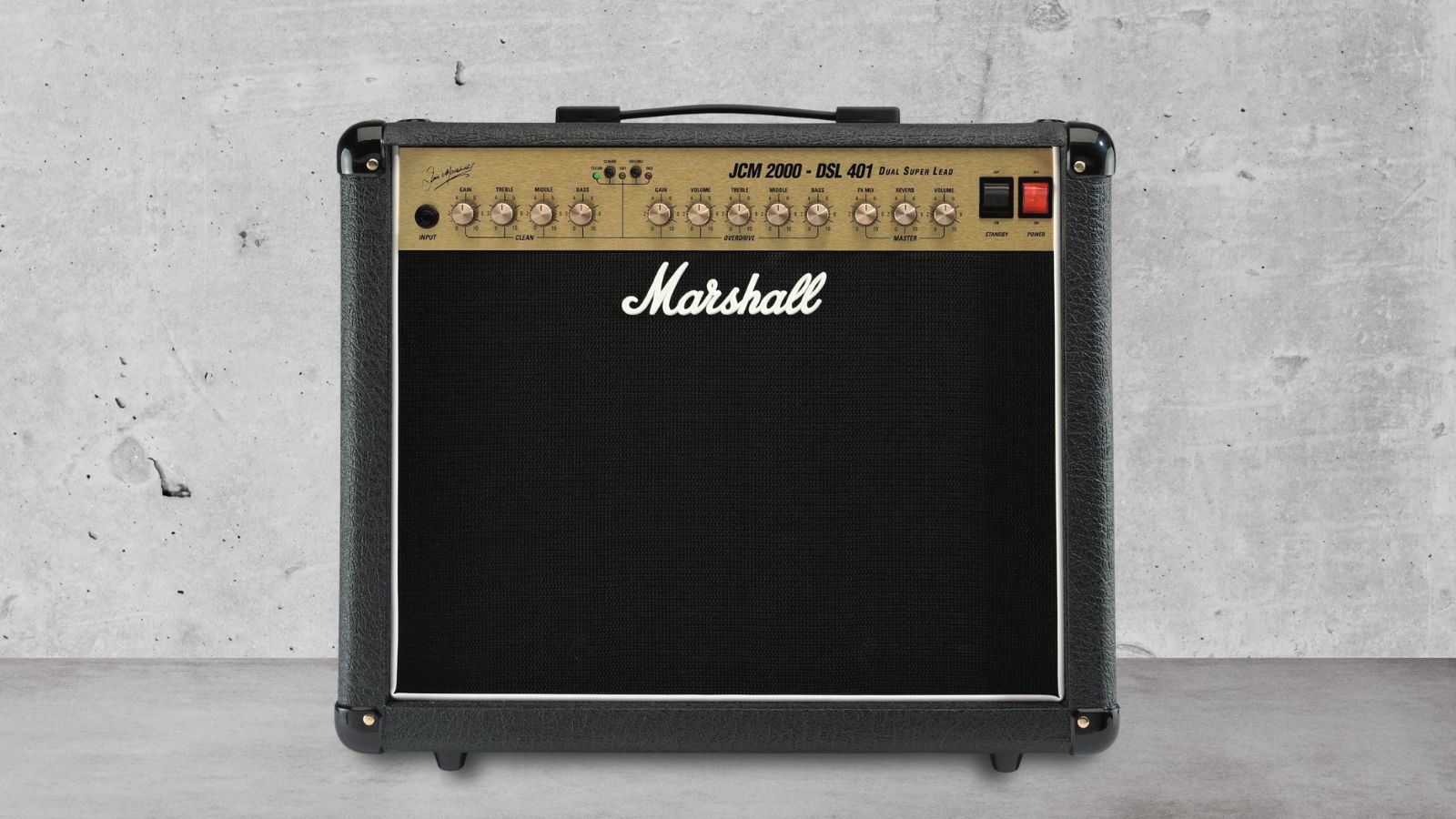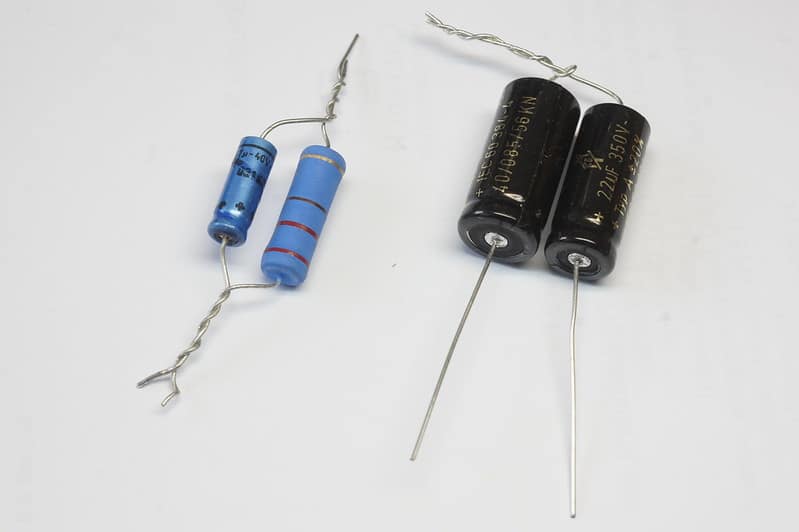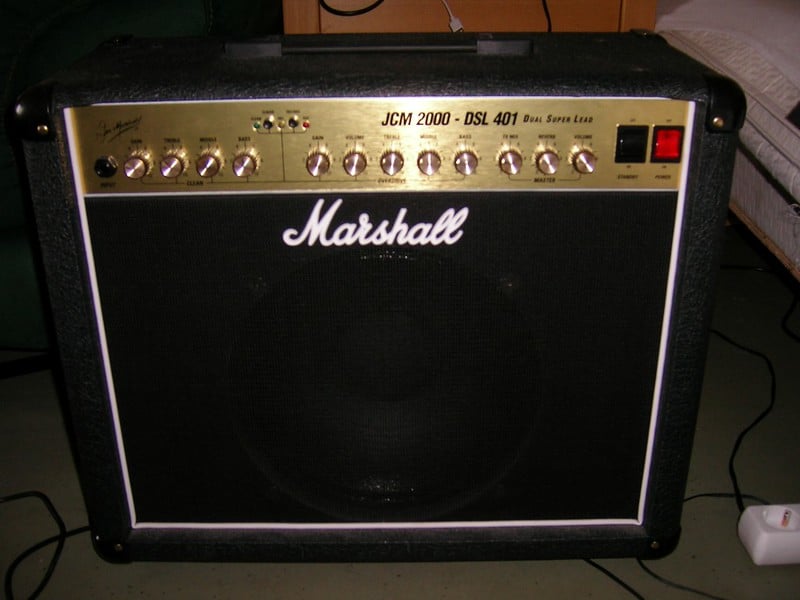
Marshall is one of the oldest audio equipment brands and they have launched this combo amp with 40W power. This amp is a perfect choice for stage performances as well as studio recordings as it supports various tones.
It has been designed with three voices, including OD1/OD2 and clean, and two channels. In addition, there is a built-in reverb that fills the sound. Still, there are some problems associated with this combo app that the users must know about!
Marshall JCM 2000 DSL 401 Problems
1. Tube Going Bad
Since this is a tube amp, a damaged tube is one of the most common problems associated with this amp. The tubes are prone to cracking, damage caused by overheating, and failure to operate. =
If the tube is damaged, you will hear unusual sounds and the volume will be lower. The only solution to this problem is getting the tube replaced but you must hire a professional to make sure the new connections are done correctly.
To prevent tube damage, make sure you don’t turn on the amp if the speaker hasn’t been plugged in, and don’t flip the power button rapidly as they cause damage to the power connections and tube.
Lastly, make sure the air vents are open because tube overheating is another reason behind the damage.
2. Resistors Blowing
This combo amp is not designed with high-quality resistors (this is a manufacturing error), which is why it’s prone to blowing. However, overheating and inconsistent current supply can also lead to resistor damage.
Once the resistor is blown, the only solution is to replace it but make sure the current supply is repaired to prevent repetitive damage to the resistors.
Secondly, you must place the amp in a well-ventilated area to prevent overheating. For instance, you should never place the amp in a closed cabinet because lack of airflow will heat up the amp, resulting in resistor damage.
3. Hum
Humming sound in the music can be a deal-breaker as it impacts the quality of music. So, if the amp is making a humming sound, there are various factors that you need to consider.
- Output & Input Signals
The unmatched signals are the most common reason behind humming. For instance, if the output has more signals as compared to the input or vice versa, the humming sound will be produced.
The solution is to install a resistor in the audio source but make sure the resistor’s capacity doesn’t exceed the audio source’s power. Also, it’s better to hire an electrician to get the resistor installed.
- Ground Loops
Earthing or grounding occurs when users connect the ground pin to the electricity outlet but the current fails to pass through the cable. As a result, it creates a loop and the current will go back to the current source, resulting in voltage fluctuations.
For this reason, it’s recommended that you connect the devices to the same electrical outlet to ensure balanced voltage.
In addition to this, you must install an isolating transformer to the ground cable. This is because the transformer is designed with an earth lift switch that helps minimize the current flow through the wires.
Last but not least, you can connect the grounding wire from a speaker to the amp – the grounding wire offers a different path for signal flow, which prevents the formation of a ground loop.
4. Intermittent Or No Sound
It can be challenging to fix the no sound or intermittent sound error but finding the root cause actually helps. To begin with, you must ensure that the speaker cones are connected to the amp properly and connections aren’t loose.
That’s because improper connections are the most common reason behind the intermittent sound. So, check the speaker’s connection and ensure the cables are tightly connected to the ports.
Secondly, you must check the cabling’s continuity with the help of a continuity tester. If there are continuity issues in the cabling, you have to replace the cabling.
The third solution is to check the output and input jacks for oxidation. In case the jacks are oxidized or rusted, you must replace them with clean and new jacks.
For this purpose, you must remove the amp’s chassis and unscrew the jacks to install a new one.
Another solution is to check for loose or damaged solder joints within the amp. It is common for amps to overheat, which melts the solder joints and results in disconnection from the board.
So, it’s recommended that you take off the amp’s chassis to inspect the board for damaged solder joints – if there are damaged solder joints, you must add more solder to make sure the components are connected to the board.
While you are troubleshooting the amp for sound issues, keep in mind that the components store electric charge and improper handling can result in electrocution. So, if you aren’t experienced, hire a professional technician.
5. Distorted Sound
This combo amp by Marshall is designed to offer a clean and crisp sound, which means distortion should be taken seriously. To begin with, you need to check the gain and make sure it’s correct.
Gain is defined as a relationship between the output and input volume and it needs to match the voltage of the RCA cables.
To fix this problem, you need to play some loud songs and adjust the gain until the distortion is fixed. The point where the distortion is eliminated is the correct gain setting.
The second solution is to change the music source. This is because the amp will likely broadcast distorted sound when you play low-quality music. So, check the music source, and if possible, switch it to high-quality music.
6. Smoky Smell Coming From The Amp
If the smoky or burning smell is coming from the amp, there are two possibilities; a malfunctioning amp and a dusty amp.
- Dust
First of all, dust burning can result in an unpleasant smell. If the burning smell is caused by dust, you need to check the chassis and make sure it’s installed in the upside-down position rather than the upright position.
This is because the amp that’s installed in an upside-down position will not be able to accumulate dust.
Secondly, you must inspect the tubes and see if they are covered in dust. That’s because when the amp is heated, the dust accumulated on the tubes will burn, resulting in the smell.
So, the only solution is to change the installation position and clean the dust. However, before you clean the amp tubes, make sure you disconnect them.
In addition, if you have removed the chassis for better cleaning, make sure you don’t touch the capacitors and resistors as they can cause electrocution even if the amp is switched off.
Last but not least, if you are using a liquid cleaner for cleaning the tube, it’s best to disconnect the tubes for cleaning to prevent the cleaner from getting into the tube sockets.
As far as the cleaner is concerned, you can opt for isopropyl alcohol for cleaning the solder connectors while tubes can be cleaned with a glass cleaner.
Lastly, don’t touch the transformers because aggressive cleaning can reduce the performance of the transformer.
- Malfunctioning Amp
If the internal components dissipate excess heat or undergo voltage fluctuations, it will result in a burning smell as well. So, turn off the amp and take off the chassis to inspect the internal components of the amp.
If the components seem burnt or damaged, they need to be replaced immediately before they cause permanent damage to the circuit.
Secondly, you must check the power supply to ensure there are no voltage fluctuations – these fluctuations can adversely impact the amp’s performance and cause component damage or degradation.
If there is voltage fluctuation, you will need to contact the electricity provider to streamline the electrical connections.
The Bottom Line
This combo amp by Marshall is one of the best in the market but it’s susceptible to some errors. The solutions mentioned in this article are likely to fix the performance and sound-related issues.
However, if you need to replace some parts, you must hire a professional technician or Marshall’s technical assistance team.




My DSL 401 produces very low volume. I’ve tested all the tubes and also the grid voltage on the inverter tube which at 42 volts seemed a little high to me but that’s as far as my knowledge goes. Any suggestions would be much appreciated.
I had the same reverb issue, changes the pot of the reverb, works again on both channels.
I have a Marshall JCM 2000 DSL 401 amp that drops volume after playing a while or it will increase in volume after playing a while. Had it checked out ,but was told the tubes tested ok. Can’t sell it in it’s present condition . HELP!
I’ve had all the boards changed on my JCM 2000 DSL 40. New tubes also re biased. Seams to be running hot. Maybe normal. But reverb not working on clean channel. Tried new tank.Tech don’t know why.